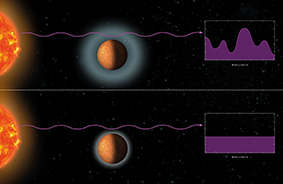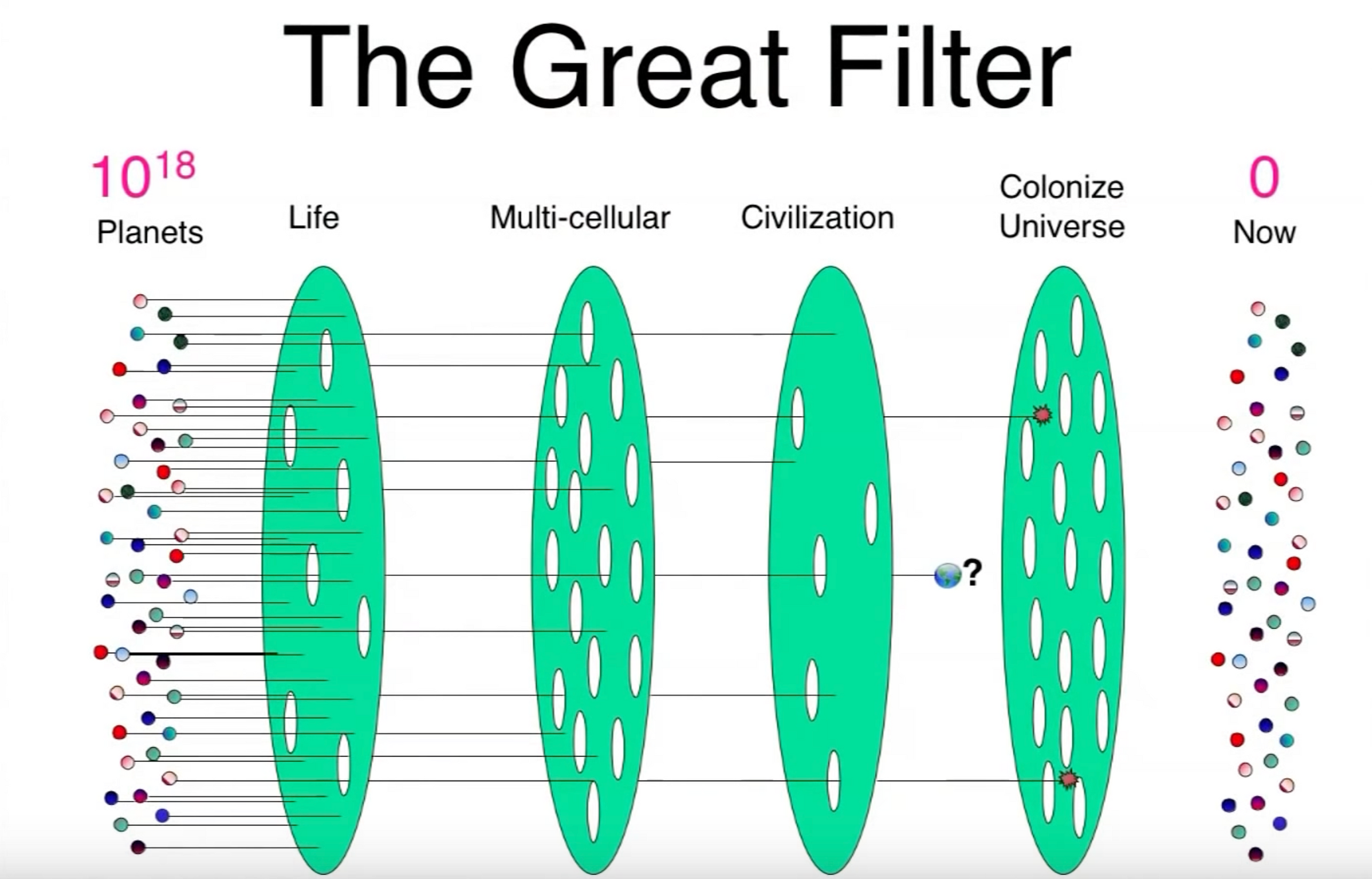Searching life on exoplanets: Part II
Hi! Before reading this post, make sure to check out the first part of Searching Life on Exoplanets!
How do we find life outside of Earth?
A method used is by searching for biomarkers. Biomarkers are molecules that indicate life. As for now, we don’t know what specific molecules allow life to exist but we think that water and carbon allowed life to evolve on Earth. However, due to physical and chemical processes, both these substances are very common in the universe. We cannot simply look for individual biomarkers on exoplanets, there's a lot to be taken into consideration. Oxygen, for example, is not a sufficient biomarker since its presence can also be explained in the absence of like. There could’ve been a runaway greenhouse effect causing its oceans to evaporate and UV light from the star breaks the water down into oxygen and hydrogen. However, the hydrogen is light and could have escaped, leaving behind oxygen.
Vocabubbleary: The runaway greenhouse effect is when a plant absorbs more energy from its star than it can radiate back to space. It also causes a planet to heat up faster as its temperature increases
A combination of specific molecules can be used to find life. Oxygen is an oxidising gas and methane is a reducing gas, and both would quickly be removed from the atmosphere in presence of each other unless they were being replenished- by life. The way biomarkers and gasses in the atmospheres of exoplanets are detected is with a method called transit spectroscopy.
Vocabubbleary: Transit spectroscopy is a process where captured light can be split into a spectrum of colors that can be read to see what molecules it contains. Scientists use the light from a star that passes through the atmosphere of exoplanets to reveal if molecules like water are present, which are important biomarkers.
So, are we alone in the universe?
Earth is far enough so it doesn’t evaporate but close enough so it doesn’t freeze. Within the Milky Way, there are about 40 billion sun-like stars and around ⅕ are orbited by planets with a similar habitable zone as us. Even if only 1% have life, that would be 80 million planets. Dr Frank Drake also formed an equation that could estimate number of advanced civilizations in our galaxy that shows that there are potentially thousands or millions of planets with life in the universe.
Now, you may be wondering that despite this, why have we not found any? I present to you the Fermi paradox. It reveals how there should be one of many life forms but there is no convincing evidence to prove this. There are many explanations to this but here are some of the popular ones... One theory is that there are alien civilizations out there but we have failed in our communication. There may be gaps between technology or intelligence to contact us. There is also a theory explaining us being the only life in the universe of the “Great Filter” that stops civilisations from continuing beyond a point. This can go both ways for us: other civilisations went through the same stages of life as us, like the development of cells and then organisms and then having brains. It is believed that one of these stages is near impossible for civilisations to pass through but humankind managed to succeeded through the Great Filter, making us the only life form to exist.
The next scenario is that the Great Filter is yet to come since its purpose is to stop all life in the universe from existing. It means that Earth may lose its life soon through many imaginable ways like a giant asteroid hitting our planet, or it could be a result of human action due to technological advancements: a nuclear explosion, genetic issues, AI taking over or climate change making Earth inhabitable.
Hubble Tea of the Post
Hubble finds a galactic neighbour ESO 174-1. It is classified as an irregular galaxy and has an appearance of a hazy cloud in front of bright stars. It is 11 million light years from Earth and is consists of a bright cloud of stars and a faint string of dark gas and dust. This image is actually part of a collection of observations by Hubble to understand the galaxy near the Milky Way.The purpose of the observations is to discover the brightest stars and the basic characteristics of all known galaxy within 10 megaparsecs.
Vocabubbleary: a parsec is a unit used by astronomers where 10 megaparsecs is equal to 32 million light years. This makes astronomical distances easier to be recorded and understood.
That’s the end of searching for life on exoplanets, and we hope that you found it interesting! We talked about biomarkers, transit spectroscopy, the Fermi Paradox and more. Stay tuned for our next post and follow us on our socials to stay updated and give us suggestions on what you would like to read about :) Remember to enjoy learning about our beautiful universe while sipping space tea! 🔭✨
Socials!
Instagram: hubble._.tea
Twitter: hubble0_0tea







Comments
Post a Comment